The Turner Syndrome or. Ullrich-Turner syndrome is due to an X chromosomal abnormality, which manifests itself primarily in the form of short stature and the absence of puberty. Turner syndrome almost exclusively affects girls (around 1 in 3000).
What is Turner Syndrome?
As Turner Syndrome Gonadal dysgenesis (lack of functional germ cells) is called, which is usually due to a missing X chromosome (monosomy X) or chromosomal anomalies and which can almost exclusively affect women.
The chromosomal abnormalities present in Turner syndrome cause a deficiency in growth and sex hormones. The disease manifests itself symptomatically on the basis of early lymphedema, short stature, pterygium colli (double-sided skin folds in the neck area), thyroid thorax with nipples that are widely spaced.
In addition, Turner syndrome is characterized by a lack of menstruation (primary amenorrhea), underdevelopment of the breast and ovaries (gonadal streaks or cords of connective tissue) and infertility (sterility) due to the underdeveloped ovaries (ovaries).
In addition, girls affected by Turner syndrome show unimpaired intelligence development.
causes
The Turner Syndrome is due to specific genetic changes. Healthy people have 23 pairs of chromosomes, one pair of chromosomes being made up of the sex chromosomes (XX or XY).
Turner syndrome is an abnormality with this pair of chromosomes that can manifest itself in different ways. On the one hand, an X chromosome can be missing (monosomy X), so that each cell in the body only has one X chromosome. On the other hand, the second X chromosome can be partially missing, so that cells with complete and incomplete genetic information are present at the same time (mosaic). Thirdly, the second X chromosome can be present with negative structural changes that cause Turner syndrome.
The chromosome abnormalities mentioned are due to a disturbed chromosome distribution within the first cell division phases or during the formation of the germ cells after fertilization, although the exact trigger for the maldistribution is not yet known. However, inheritance of this maldistribution is excluded.
Symptoms, ailments & signs
Turner syndrome leads to numerous symptoms that occur in different forms and occur depending on the age of the patient. A typical sign is the short stature, which already shows at birth. The girls are below the norm with their weight and height. Another characteristic symptom are underdeveloped ovaries, which cause a reduced production of female sex hormones.
This prevents puberty and menstruation does not take place. Breasts and sexual organs are underdeveloped and appear childlike even in adulthood. Fertility is limited and pregnancy is often impossible. Other organs can also be malformed. In many cases, there is a horseshoe kidney where both kidneys are connected.
Often there is no valve leaflet on the aortic valve in the heart, which can lead to the formation of an aortic aneurysm. In newborns, fluid build-up (edema) occurs on the hands and feet. The hairline is particularly deep in the neck. On both sides of the neck, a wing-like skin fold extends from the lower end of the temporal bone to the shoulder blade.
Malformations of the ear and hearing loss occur. The chest is deformed like a shield and the smaller nipples are wide apart. There are numerous moles on the skin. Malformed elbow joints cause the forearm to be in an abnormal position. Mental development is not impaired in Turner syndrome.
Diagnosis & course
A Turner Syndrome is usually diagnosed based on the characteristic externally recognizable symptoms immediately after the child is born. Newborns affected by Turner syndrome show lymphedema and pterygium colli (folds of skin on both sides of the neck).
A lower weight and height can also indicate a short stature. The diagnosis is confirmed by a chromosome analysis, in which the underlying genetic anomaly can be determined. This is also possible as part of prenatal diagnostic procedures. The course of the disease in Turner syndrome depends on the extent to which the deficiency in sex and growth hormones can be compensated therapeutically.
If the therapy is successful, the affected child will develop largely normally, although it will remain sterile and stunted. People with Turner syndrome have a normal life expectancy.
Complications
Turner syndrome leads to various complications and complaints for those affected. First and foremost, the syndrome leads to a significant short stature. This has a very negative effect on the quality of life of the person affected and can significantly reduce it. In addition, Turner syndrome leads to menstrual disorders and a lack of bleeding in women.
Irritability or severe mood swings can also become apparent. The girls cannot reach puberty either and suffer from infertility. Especially at a young age, the symptoms of Turner syndrome can lead to bullying or teasing, so that those affected also develop psychological complaints or depression.
Discomfort in the feet or hands can also occur with this disease. Due to the high number of liver spots, the patient may also suffer from reduced aesthetics. Treatment for Turner syndrome is always based on the exact symptoms. They can be limited, but not completely cured.
There are no complications. As a rule, those affected can also lead an ordinary everyday life. Turner syndrome does not have a negative impact on the life expectancy of those affected. The parents or relatives can also suffer from psychological complaints or depression and therefore also need psychological care.
When should you go to the doctor?
With Turner syndrome, the affected person is always dependent on medical treatment to prevent further complications and symptoms. Only through an early diagnosis and subsequent treatment can a further worsening of the symptoms be prevented. Since it is a genetic disease, there is no complete cure. If you want to have children, genetic counseling should be carried out to prevent the disease from recurring. A doctor should be consulted if the child suffers from short stature. This can usually be seen with the eye.
Turner syndrome also usually reduces the weight of the affected children. Some patients also suffer from reduced fertility due to the disease, but this does not show up until later in life. Since Turner syndrome can also lead to a malformation of the heart, the heart should also be examined regularly by a doctor. Furthermore, various malformations in the face also indicate this syndrome and should be examined by a doctor. Most often Turner syndrome can be diagnosed by a pediatrician or a general practitioner. Further treatment depends heavily on the exact severity and nature of the complaints.
Treatment & Therapy
The therapeutic measures are aimed at one Turner Syndrome primarily to compensate for the present deficiency in growth and sex hormones. For example, those affected receive biosynthetically produced growth hormones from around the age of six to positively influence their body size.
However, the success of such growth therapy varies from person to person. From the age of twelve, sex hormones such as estrogen are also used to induce the otherwise absent puberty of Turner syndrome by means of medicinal hormones, so that the primary (uterus or uterus) and secondary sexual characteristics (breast, labia, vagina) are largely normal can train.
The underdevelopment of the ovaries (ovarian insufficiency) cannot be compensated for with hormone therapy, which is why the affected women remain infertile (sterile). In individual cases, however, there are attempts to carry out artificial insemination with egg cells removed from the ovaries prior to the loss of function as part of in-vito fertilization. However, these are still in the early stages of clinical testing.
In addition, the therapy with growth and sex hormones serves to prevent osteoporosis. In addition, accompanying symptoms such as lymphedema can be treated with lymphatic drainage. If there are malformations of internal organs such as the heart or kidneys, surgery may be indicated. In some cases, psychotherapeutic care is recommended for girls with Turner syndrome and their parents.
You can find your medication here
➔ Medicines for menstrual crampsprevention
As the underlying causes of the chromosomal abnormality in a Turner Syndrome are not known, no reliable preventive measures exist. As part of prenatal diagnostic procedures, however, the unborn child can already be tested for a chromosomal abnormality indicative of Turner syndrome.
Aftercare
Turner syndrome is a genetic chromosomal disorder. For this reason the disease cannot be cured. Those affected are dependent on medical treatment for the rest of their lives, as other health problems can often arise. Therefore, no classic follow-up measures are necessary or possible.
During the transition period during puberty, most patients receive intensive hormone therapy. After completing this therapy, those affected should have regular check-ups with their specialist, endocrinologist and family doctor as required. In particular, if you have heart or kidney defects or other illnesses, it is necessary to regularly seek medical care.
If no health problems arise, such check-ups should take place at least every one to five years, depending on the clinical picture and the age of the patient. The treating clinic decides on this. So far there is no fully developed and generally applicable concept in medicine for the care of adult patients with Turner syndrome.
As a result, follow-up procedures can vary widely. Many women with Turner syndrome also suffer from severe psychological problems. For this reason, it is advisable to seek psychotherapeutic help regardless of your physical condition or to regularly visit a self-help group for those affected.
You can do that yourself
Children with Turner syndrome need help with everyday tasks. Parents must ensure that the child is receiving the best possible treatment and is taking the medication as directed. Good medical supervision is particularly important before puberty so that hormonal changes can be optimally controlled medically.
If signs of osteoporosis, circulatory disorders or other typical comorbidities of Turners syndrome occur, a doctor's visit is indicated. The patients themselves must ensure a healthy and balanced diet in order to prevent diseases such as diabetes mellitus or Crohn's disease. In the case of sick infants, parents must pay careful attention to the child's food intake, since vomiting and loss of appetite occur as a result of the suffering.
The growth in height can be supported by exercise and a wholesome diet. Proteins, vitamins and minerals are particularly important in order to relieve the gastrointestinal tract, improve bone health and build sufficient fat and muscle mass. It may be necessary to take dietary supplements and perform hormonal treatments. It is best for the parents and later those affected to keep an illness diary in which all symptoms and abnormalities are noted.

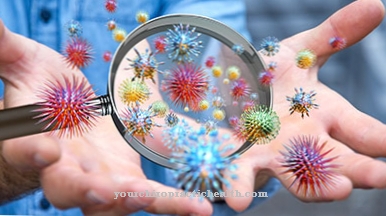
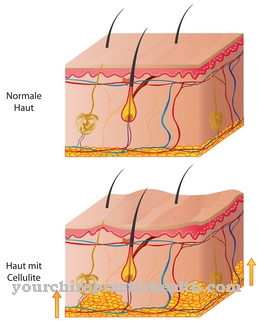
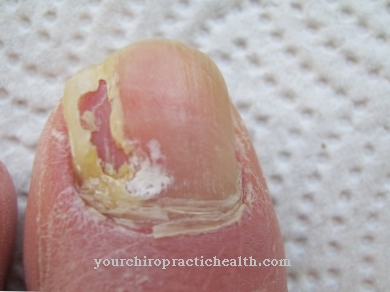

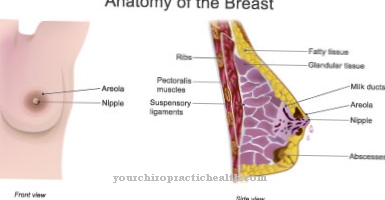
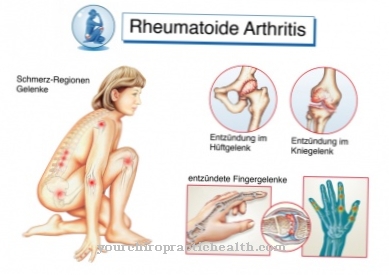





.jpg)



.jpg)










.jpg)
